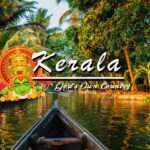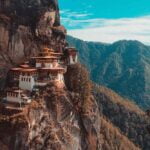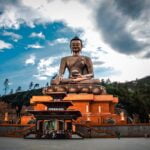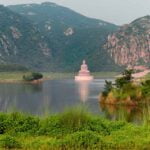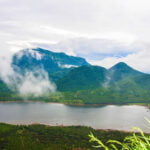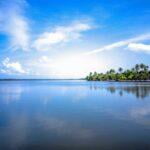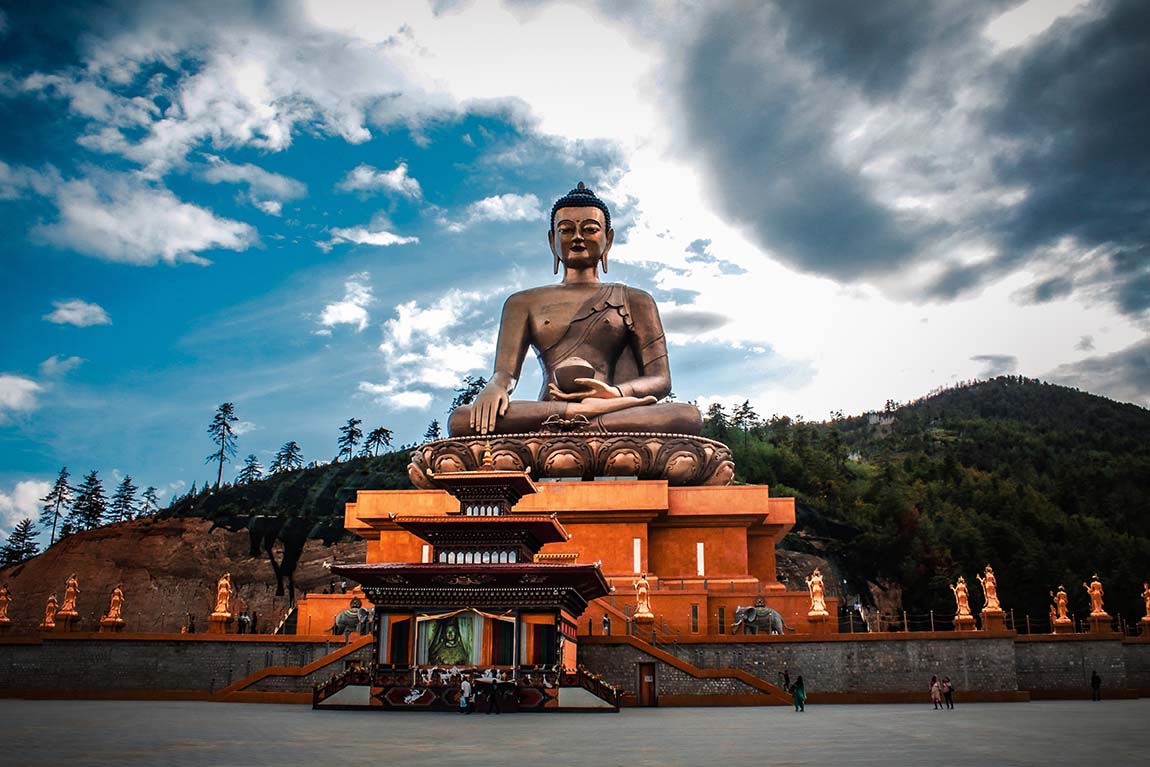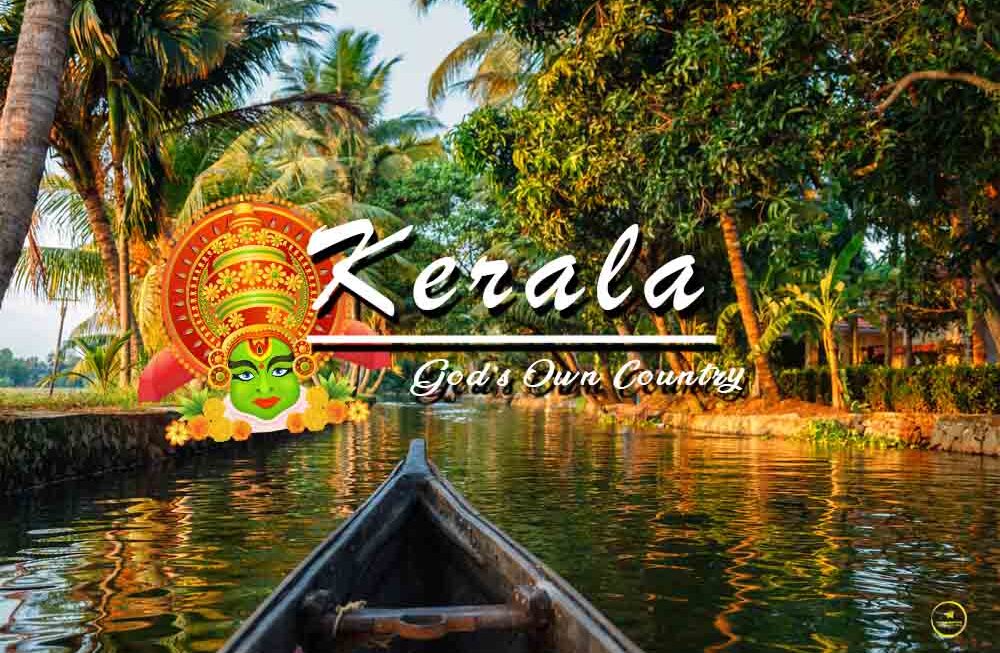Bhutan, known as the “Final Shangri-La,” is a mesmerizing blend of breathtaking mountains, old monasteries, and a steadfast spirit of tradition. Nestled in the heart of the Himalayas, it offers a respite from everyday life, enticing visitors with pristine landscapes and spiritual sanctuaries. The best Bhutan tourist attractions are more than just sights; they’re also experiences.
Every aspect of this kingdom tells a tale, from the repetitive chants in peaceful temples to the brilliant hues of traditional festivities. A visit here is about more than just sightseeing; it is about immersing oneself in a culture that values simplicity, joy, and harmony. So, are you ready to go on a voyage full of wonder and introspection?
Outline of the Article
Introduction to Bhutan’s Mystical Charm
Have you ever desired an escape from today’s frantic pace? Bhutan is the solution! It’s a world where happiness takes precedence above material gain, nestled in the Eastern Himalayas. While modernity rubs up against its frontiers, Bhutan zealously protects its tradition, exhibiting it through Bhutan tourist attractions that exude timeless appeal. Rules are not merely preserved here; they are cherished on a daily basis. As you walk, you will come across a paradise that speaks to your spirit. Intrigued? Dive into this tranquil environment to discover a new way of living.
The Himalayan Kingdom’s Bhutan Tourist Attractions
1. Thimphu: The Unique Capital
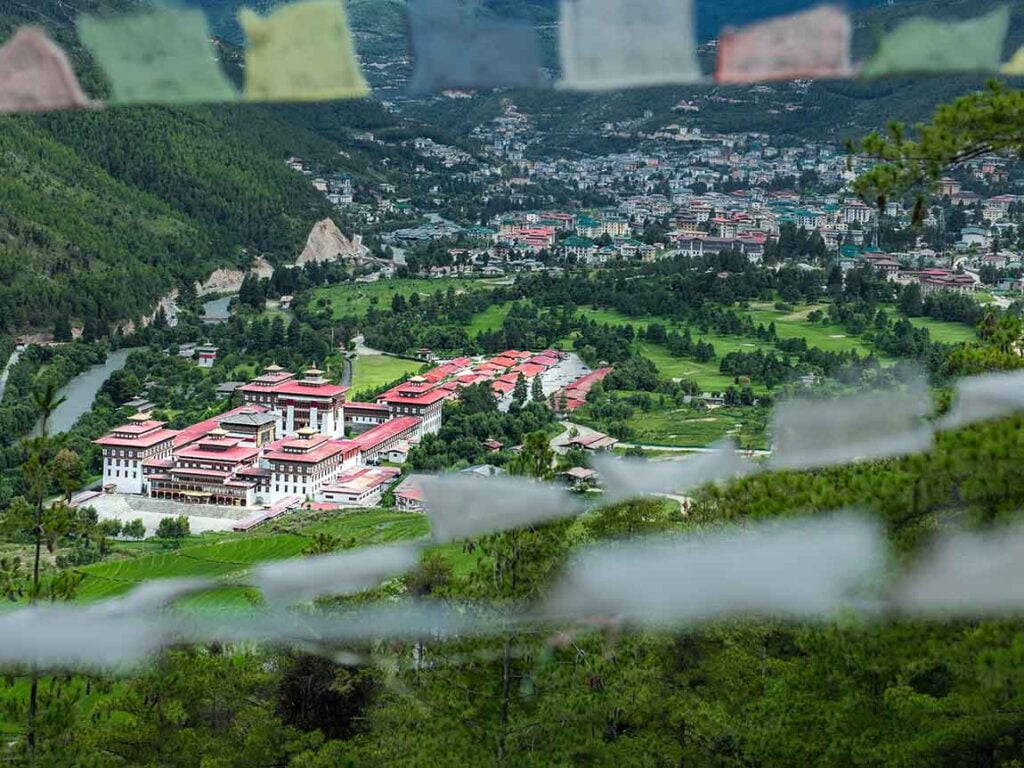
Thimphu, Bhutan’s capital, is not your usual capital city. It’s tucked away in the Himalayas, where medieval monasteries coexist with busy markets. Bhutan tourist attractions in Thimphu, such as the towering Tashichho Dzong and the calm National Memorial Chorten, pull you into their timeless tales as you meander through its streets. This city captures the essence of Bhutanese charm by skillfully combining modernity and heritage. So, are you looking for a one-of-a-kind capital experience? Thimphu is waiting for you.
Things to Do:
- Dive into the local culture at the weekend market.
- Experience tranquility at the National Memorial Chorten.
- Explore the Folk Heritage Museum for a glimpse of traditional Bhutanese life.
Best Time to Reach (Timing):
- Autumn (September to November) offers clear skies and vibrant festivals.
- Spring (March to May) brings blossoming flowers and pleasant weather.
Tourist Attractions:
- Tashichho Dzong is a majestic fortress and one of the primary Bhutan tourist attractions.
- Buddha Dordenma: A gigantic Buddha statue overlooking the city
Nearest Airport:
- Paro International Airport is approximately 1 hour away.
Nearest Railway Stations:
- Bhutan doesn’t have railways. The nearest is in Hasimara, West Bengal, India.
Location:
- Thimphu is situated in the western central part of Bhutan, along the banks of the Wang Chuu River.
Thimphu boasts a unique blend of modernity and culture, making it a vital stop for anybody interested in experiencing Bhutan’s heart. Thimphu delivers a distinct urban experience amidst the Himalayas, whether it’s the attraction of local handicrafts or the serenity of holy monuments. Are you ready to go exploring?
2. Paro: Gateway to Bhutan
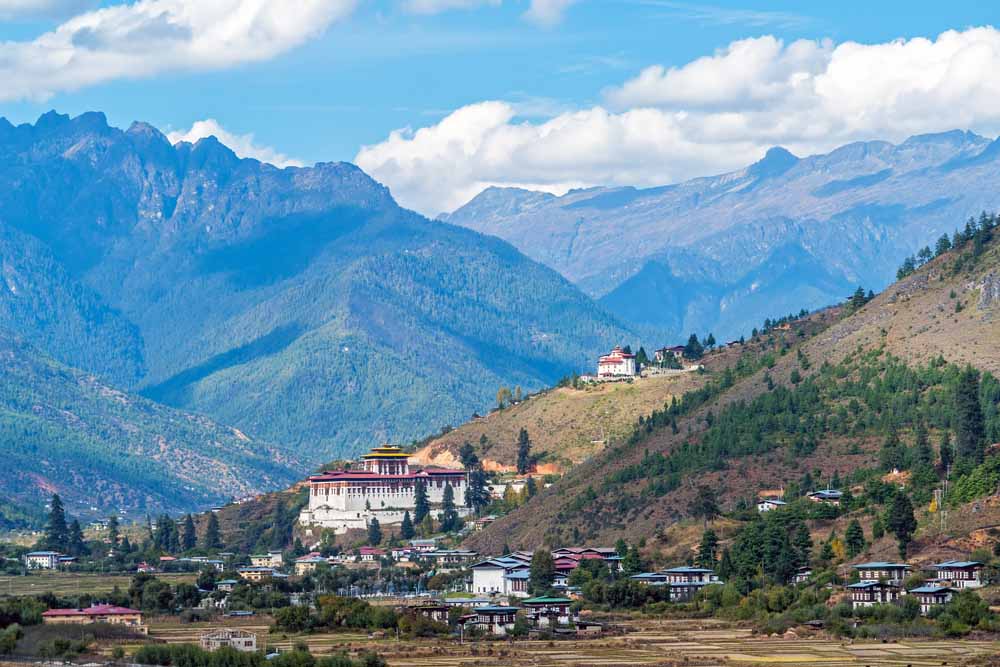
Paro, nestled among the majestic Himalayas, is frequently the first contact travelers have with Bhutan’s otherworldly splendor. Paro, as the entryway to this mysterious realm, gracefully combines nature and tradition. Its beautiful valleys and crystal-clear rivers provide the backdrop for some of the best Bhutan tourist attractions.
The renowned Tiger’s Nest Monastery perched on a high cliff, and the stately Rinpung Dzong, which stands towering along the river, tell stories of Bhutan’s rich history. However, it is not simply the monuments that create an indelible impression, but also the warmth of its people. Do you want to get deep into Bhutan’s heart? Allow Paro to serve as your prologue.
Things to Do:
- Bask in the panoramic views of Paro Valley.
- Venture on the iconic trek to Tiger’s Nest Monastery.
- Engage in local culture through village homestays.
Best Time to Reach (Timing):
- Opt for March to May to experience spring’s embrace.
- September to November offer clear vistas and mild temperatures.
Tourist Attractions:
- Rinpung Dzong: A beacon of Bhutanese architecture
- National Museum: Dive deep into Bhutan’s rich heritage.
Nearest Airport:
- Paro International Airport: The primary international touchpoint for Bhutan.
Nearest Railway Stations:
- Bhutan lacks railways. The closest option is Hasimara, West Bengal, India.
Location:
- Gracefully positioned in the Paro Valley of western Bhutan, along the serene Paro Chhu river
In essence, Paro stands as a captivating prelude to Bhutan’s myriad wonders. Ready to embark on an unforgettable journey?
3. Punakha: A Mix of History and Scenic Beauty
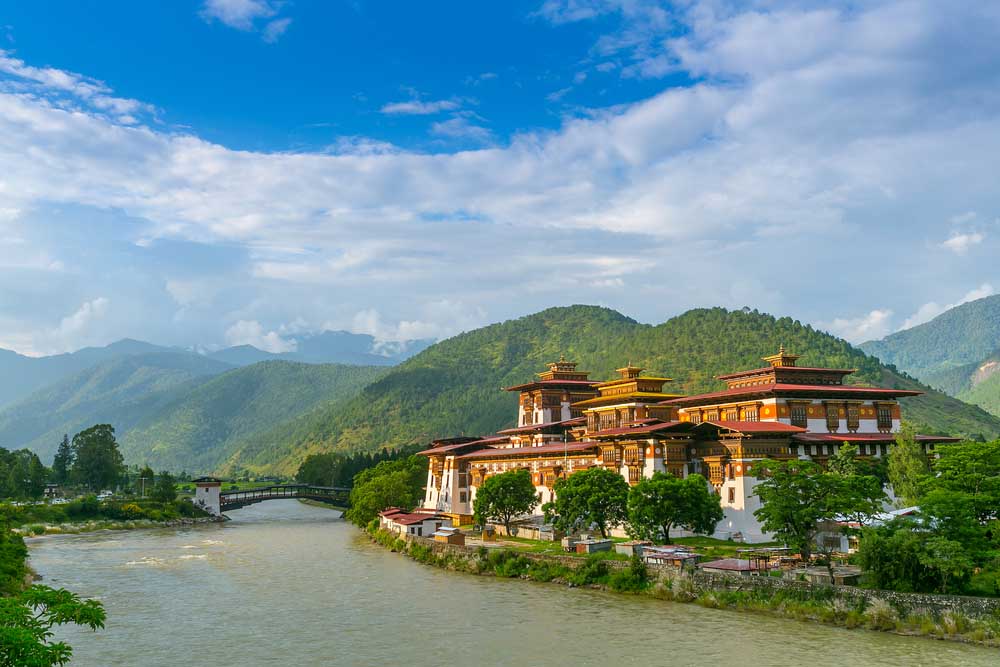
Punakha, tucked away among Bhutan’s mesmerizing scenery, is a dynamic blend of history and nature’s charm. Its significance as the old capital is still felt today. At its core sits the magnificent Punakha Dzong, a standout among the Best Bhutan tourist attractions. Punakha, which is framed by the confluence of the Mo Chhu and Pho Chhu rivers, delivers an otherworldly experience. The valleys bloom in bright colors, and antique monuments tell stories of bygone periods. Punakha is the ideal destination for visitors looking for a hideaway where history meets natural splendor.
Things to Do:
- Traverse the enchanting Punakha Suspension Bridge.
- Attend festivals at Punakha Dzong to immerse yourself in Bhutanese culture.
- Raft along the serene Pho Chhu and Mo Chhu rivers.
Best Time to Reach (Timing):
- Visit during spring (March to May) for blossoming landscapes.
- October to November provide clear skies and vivid nature views.
Tourist Attractions:
- The Regal Punakha Dzong: A Testament to Bhutanese Architecture
- Khamsum Yulley Namgyal Chorten: An iconic monument with panoramic views
Nearest Airport:
- Paro International Airport is roughly a 3-hour drive from Punakha.
Nearest Railway Stations:
- There are no railways in Bhutan. The closest station is Hasimara, West Bengal, India.
Location:
- Nestled in the eastern Himalayas, Punakha is located in western Bhutan, where the Pho Chhu and Mo Chhu rivers meet.
For a journey filled with historical whispers and nature’s symphony, Punakha promises an experience unparalleled. Dive in and allow its magic to surround you.
4. Tiger’s Nest Monastery: The Jewel of Bhutan

Tiger’s Nest Monastery, or Paro Taktsang, is Bhutan’s defining symbol of spirituality and heritage, perched precariously on a cliffside. This hallowed location is not only one of the top Bhutan tourist attractions; it is also the soulful heart of the country. According to legend, Guru Rinpoche flew here on the back of a tigress to introduce Buddhism to Bhutan.
Every turn of the trail gives panoramic views that blend with stories of ancient mysticism. Aside from being an architectural masterpiece, the monastery promises spiritual peace in the embrace of the Himalayas. Looking for something more than just sightseeing? Tiger’s Nest is waiting for you.
Things to Do:
- Undertake the rewarding trek up to the monastery.
- Meditate in the hallowed halls, resonating with chants.
- Capture stunning panoramic photos of the Paro Valley below.
Best Time to Reach (Timing):
- Ideal months: March to May and September to November.
- Timings: 7 AM to 1 PM and 2 PM to 6 PM.
Tourist Attractions:
- Sacred caves where Guru Rinpoche meditated
- Intricate murals and relics inside the monastery
Nearest Airport:
- Paro International Airport, located approximately 10 km away
Nearest Railway Stations:
- There are no railways in Bhutan. The closest station is Hasimara, West Bengal, India.
Location:
- Overlooking Paro Valley, on the edge of a 900-meter cliff in Paro, Bhutan.
For a spiritual and scenic immersion that’s unparalleled, the Tiger’s Nest Monastery is an experience etched in tranquility and tradition. Dive into this chapter of Bhutan’s legacy!
5. Bumthang Valley: The Spiritual Heart of Bhutan

Bumthang Valley, often known as Bhutan’s spiritual center, is a rich tapestry of ancient temples and colorful festivals. Among the many Bhutan tourist attractions, Bumthang encapsulates the spirit of Bhutanese culture and history in a unique way. Explore the legends of ancient Buddhist gurus or become lost in the beauty of its landscapes. Bumthang beckons the interested traveler with its echoes of pure rivers and legends spoken by ancient walls. Allow the beats of Bumthang Valley to serenade your spirit if you’re looking for an authentic Bhutanese experience.
Things to Do:
- Immerse in the Jakar Tshechu, a vibrant religious festival.
- Visit the Kurje Lhakhang, where history meets divinity.
- Sample the famous Bumthang cheese and apple cider.
- Explore the valley’s intricate handwoven textiles.
Best Time to Reach (Timing):
- The months of March to May (Spring) and September to November (Autumn) offer clear skies and pleasant weather.
Tourist Attractions:
- Jakar Dzong: The fortress overlooking the valley.
- Tamshing Lhakhang: A testament to Bhutan’s artistic heritage.
- Membar Tsho: The mysterious ‘Burning Lake‘ is among the leading Bhutan tourist attractions.
Nearest Airport:
- Bathpalathang Airport in Bumthang itself.
Nearest Railway Stations:
- Bhutan does not have any railway stations. The closest major railway station would be in Siliguri, India.
Location:
- Bumthang Valley is located in the central part of Bhutan, in the Bumthang District.
The undulating landscapes, rich culture, and spiritual ambiance of Bumthang Valley make it a top pick for those looking to dive deep into Bhutan’s essence.
6. Phobjikha Valley: Nature’s Grand Theater in Bhutan
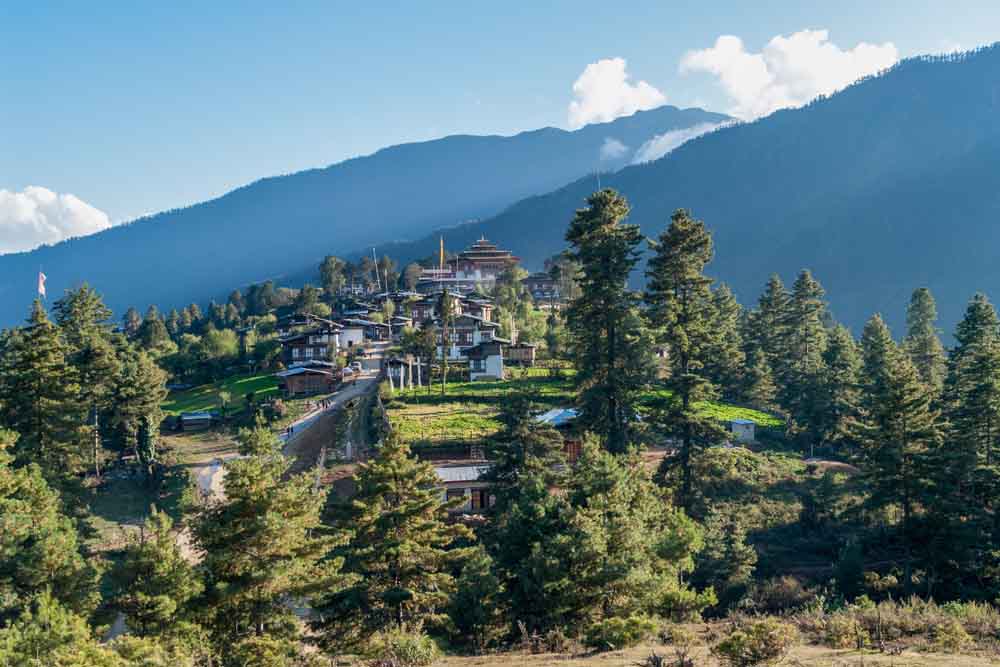
Phobjikha Valley, located in the heart of Bhutan, is more than simply another gorgeous location. Nature’s most spectacular acts take place here. It’s a sanctuary for birdwatchers and wildlife aficionados, thanks to the beautiful black-necked cranes that beautify the valley during the winter. This serene area also houses the 17th-century Gangteng Monastery, a must-see among Bhutan tourist attractions. As you wander the valley’s trails, take in the fresh air and let the panoramic vistas enchant you. With its ethereal splendor, Phobjikha Valley embodies Bhutan’s unspoiled charm.
Things to Do:
- Witness the annual migration of black-necked cranes.
- Explore the Gangteng Monastery.
- Engage in nature walks and hiking trails.
- Participate in local festivals to embrace Bhutanese culture.
Best Time to Reach (Timing):
- October to March, especially for crane sightings.
Tourist Attractions:
- Black-necked cranes’ roosting areas.
- Gangteng Monastery is a centerpiece of Bhutan tourist attractions.
- Nature trails offer picturesque landscapes and a serene ambiance.
Nearest Airport:
- Paro International Airport.
Nearest Railway Stations:
- Bhutan doesn’t have railways. The nearest railway station is in New Jalpaiguri, India.
Location:
- Located in the Wangdue Phodrang District, Central Bhutan.
As you chart your journey, Phobjikha Valley promises a blend of nature’s wonders and cultural richness, making it one of the Best tourist places in Bhutan.
7. Trongsa: The Heart of Bhutan

Trongsa, Bhutan’s geographical center, has a prominent place in the country’s history. Its commanding position previously supervised all East-West traffic, making it a vital hub. Today, the imposing Trongsa Dzong, a monument to Bhutan’s architectural prowess, entices visitors. This town, a major highlight among Bhutan tourist attractions, provides not only historical insights but also panoramic vistas of deep valleys. Trongsa, whether you’re a history buff or a nature lover, blends the fascination of both, enticing you to discover its stories and pathways.
Things to Do:
- Wander through the corridors of Trongsa Dzong.
- Visit Ta Dzong, a watchtower-turned-museum.
- Immerse in local life at the bustling town market.
Best Time to Reach (Timing):
- October to December for clear skies and pleasant weather.
Tourist Attractions:
- The sprawling Trongsa Dzong is a fine example of Bhutanese architecture.
- Thruepang Palace is a historic royal residence.
- Amidst the many Bhutan tourist attractions, Trongsa offers a unique blend of history and natural beauty.
Nearest Airport:
- Gelephu Airport is approximately 129 kilometers from Trongsa.
Nearest Railway Stations:
- Bhutan does not have a railway network. The nearest railway station is in India, at New Jalpaiguri.
Location:
- Located centrally in Bhutan, Trongsa connects the eastern and western parts of the country.
Delve into Trongsa’s rich tapestry of history and nature, and find yourself enveloped in its captivating charm.
8. Haa Valley: Bhutan’s Hidden Gem
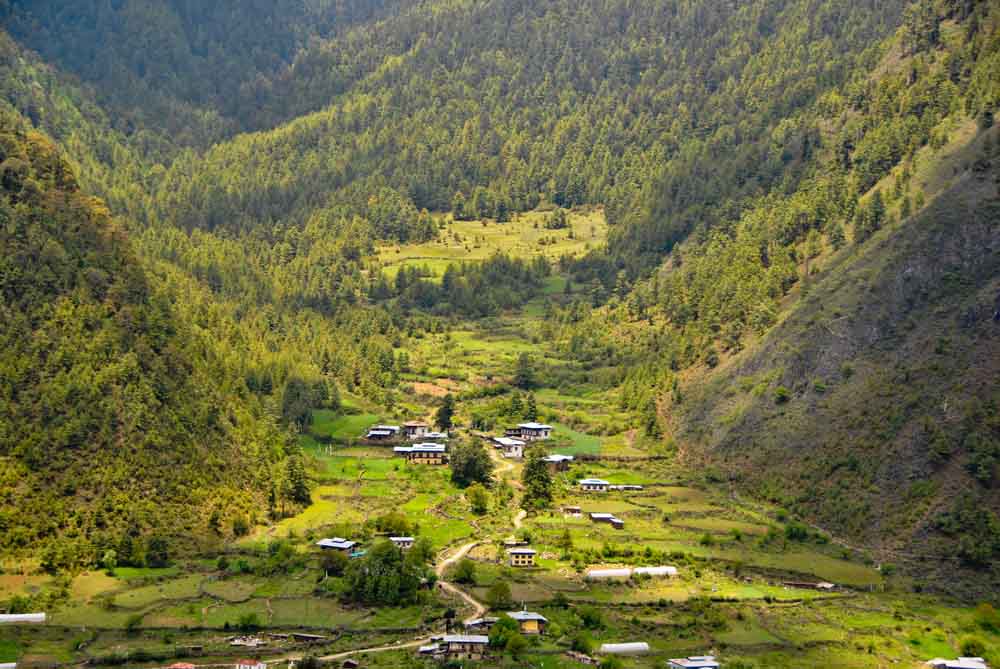
Haa Valley, located in the southwestern region of Bhutan, is one of the least visited areas, giving it a pristine getaway for those seeking tranquility. The valley’s rich past is highlighted by lush paddy fields, old temples, and the annual summer festival. Among numerous Bhutan tourist attractions, Haa Valley stands out for its unrivaled natural beauty and tranquility. The only sounds are the whisper of the air and the chants from monasteries. If you want to experience Bhutan in its purest form, this pristine beauty is a must-see. Discover Haa Valley’s enchantment and immerse yourself in its mystic allure.
Things to Do:
- Engage in village walks to experience local life.
- Visit ancient monasteries and learn about Bhutanese traditions.
- Attend the Haa Summer Festival to immerse yourself in local culture and dances.
Best Time to Reach (Timing):
- The ideal period to explore Haa Valley is during the months of April to October when the weather is pleasant and the valley is in full bloom.
Tourist Attractions:
- Lhakhang Karpo and Lhakhang Nagpo (the White and Black Temples).
- Haa Wangchuklo Dzong showcasing majestic Bhutanese architecture.
- Amidst numerous Bhutan tourist attractions, the scenic beauty and tranquility of Haa stand out.
Nearest Airport:
- Paro International Airport is roughly a 2-hour drive from the valley.
Nearest Railway Stations:
- Bhutan does not have a railway system. The nearest railway station would be in India, Hasimara station
Location:
- Nestled in the southwestern region of Bhutan, bordered by Sikkim and Tibet.
Experience Haa Valley, a less-traveled gem, offering authentic Bhutanese experiences and mesmerizing views.
9. Chele La Pass: A Majestic High

Chele La Pass, at over 13,000 feet, provides a panoramic perspective of Bhutan’s stunning splendor. This location is a short drive from Paro and is one of Bhutan’s highest motorable passes. Every traveler’s heart is captured not only by the height but also by the pristine surroundings. Chele La, one of many Bhutan tourist attractions, is a mix of adventure and natural beauty.
On a clear day, the pass offers views of the snow-capped Jomolhari and Jichu Drake peaks. The fluttering prayer flags and chilling winds tell stories about Bhutan’s rich culture and traditions. A visit here is both a spiritual and aesthetic feast.
Things to Do:
- Engage in a scenic photography session.
- Bask in the tranquil surroundings, perfect for meditation.
- Hike around to explore the pristine natural beauty.
- Witness the mesmerizing sunrise or sunset.
Best Time to Reach (Timing):
- The ideal months are October to February, ensuring clear views of the snow-capped peaks.
Tourist Attractions:
- Among various Bhutan tourist attractions, Chele La stands out due to its panoramic vistas of Jomolhari and Jichu Drake peaks.
- The region’s vibrant prayer flags tell tales of local legends.
Nearest airport:
- Paro International Airport is roughly an hour’s drive away.
Nearest railway stations:
- Bhutan doesn’t have a railway system. The closest major railway station is in New Jalpaiguri (NJP), India.
Location:
- Located about 35 kilometers from Paro in Bhutan, Chele La Pass is a remarkable rendezvous with nature.
Remember, amidst the myriad of Bhutan tourist attractions, Chele La offers a serene experience, high above the everyday hustle. It’s untouched beauty and serene ambiance make it a must-visit.
10. Dochula Pass: A Glimpse into Bhutan’s Majesty

Dochula Pass, located in the center of Bhutan, provides stunning panoramic views of the Himalayas. This pass, as one of the most popular Bhutan tourist attractions, is more than just a trip through the countryside; it’s a voyage through Bhutan’s rich culture. The 108 memorial chortens created in honor of Bhutanese troops are a tribute to the country’s rich traditions.
Dochula Pass provides a blend of nature and legacy that resonates with every traveler’s soul, whether you’re sipping a warm cup of tea overlooking the majestic peaks or immersing yourself in the spiritual aura of the location. Discover the heart of Bhutan right here.
Things to Do:
- Admire the 108 memorial chortens.
- Engage in serene meditation sessions.
- Capture breathtaking panoramic views of the Himalayas.
- Attend the Dochula Druk Wangyel Festival if you are visiting in December.
Best Time to Reach (Timing):
- Ideal months: October to February for clear mountain views.
Tourist Attractions:
- The Druk Wangyel Monastery
- The large Dochula Druk Wangyel Chorten
- Exquisite views of the Eastern Himalayas
Nearest Airport:
- Paro International Airport is approximately 2 hours away.
Nearest Railway Stations:
- Bhutan has no railway system, so travel is primarily by road.
Location:
Located on the Thimphu-Punakha highway, Dochula Pass stands as one of the most iconic Bhutan tourist attractions, offering travelers a mesmerizing blend of nature and tradition.
11. Wangdue Phodrang: A Glimpse of Bhutan’s Essence
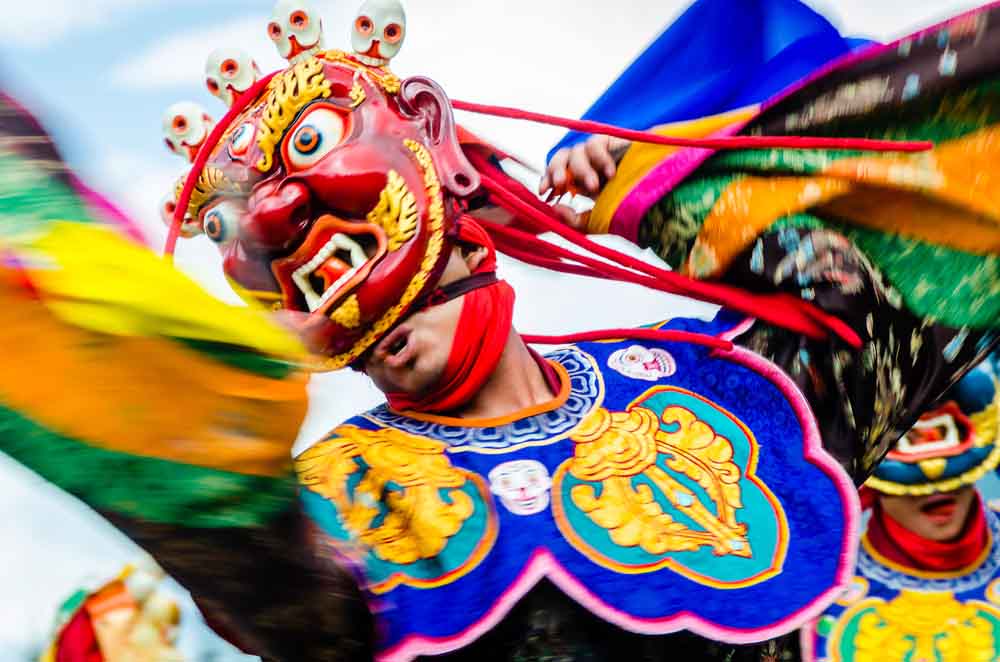
Wangdue Phodrang, known as the “gateway to central Bhutan,” is a compelling combination of scenic beauty and cultural history. This town’s strategic location in the Eastern Himalayas makes it a hub for Bhutan tourist attractions. It easily portrays Bhutan’s age-old customs against a backdrop of magnificent scenery, from the peaceful ambiance of the Wangdue Phodrang Dzong to the busy village markets.
Wangdue Phodrang guarantees an authentic Bhutanese experience, whether you are a history buff or a nature enthusiast. Don’t miss this hidden gem if you’re planning a trip to the Dragon Kingdom!
Things to Do:
- Explore Wangdue Phodrang Dzong and its architectural brilliance.
- Engage in local shopping at the vibrant Wangdue market.
- Embark on scenic treks to admire the panoramic valley views.
Best Time to Reach (Timing):
- Ideal months: October to December for clear skies and pleasant weather.
Tourist Attractions:
- Home to some of the finest Bhutan tourist attractions, prominent spots include the Wangdue Phodrang Dzong, Rinchegang village, and the Phobjikha Valley.
Nearest Airport:
- Paro International Airport is roughly a 4-hour drive away.
Nearest Railway Stations:
- Bhutan does not have any railway networks. The closest major railway station is in Hasimara, India.
Location:
- Situated in central Bhutan, south of Punakha, it overlooks the convergence of the Punatsangchhu and Dangchhu rivers.
Visit Wangdue Phodrang for a mesmerizing blend of nature and culture; it’s truly Bhutan’s heartland.
12. Jigme Dorji National Park: A Glimpse of Bhutan’s Natural Splendor

Jigme Dorji National Park, located in the magnificent Himalayas, is a biodiversity hotspot. It’s a sanctuary for flora and animal enthusiasts, spanning various altitudes. This park, despite its vastness, ranks high among Bhutan tourist attractions, providing sights of snow leopards, blue sheep, and even the elusive Bengal tiger. Its terrain tells stories of nature’s grandeur, from glacier mountains to tranquil river valleys.
A visit promises not only a close encounter with nature but also a deeper understanding of Bhutan’s conservation mentality. Dive into this natural wonder to see why it’s a must-see in the Land of the Thunder Dragon.
Things to Do:
- Engage in bird-watching; the park is home to a diverse range of avian species.
- Trek through scenic routes, unveiling nature’s wonders.
- Capture photographs of rare wildlife, including snow leopards and blue sheep.
- Visit traditional Bhutanese villages located within the park’s boundaries.
Best Time to Reach (Timing):
- March to June and September to November offer pleasant weather for exploration.
Tourist Attractions:
- The glacial lakes draw nature lovers and photographers alike.
- Mt. Jomolhari, a mesmerizing peak
- Several sacred monasteries have been added to the list of Bhutan tourist attractions.
Nearest Airport:
- Paro International Airport.
Nearest Railway Stations:
- Bhutan doesn’t have a railway system. The nearest railway station is in Hasimara, India.
Location:
- Located in the northwestern part of Bhutan, it stretches over districts like Thimphu, Paro, and Punakha.
Dive into Jigme Dorji National Park and discover why it’s an essential chapter in Bhutan’s tale of unparalleled natural beauty.
13. Rinpung Dzong: The Fortress of Bhutanese Heritage
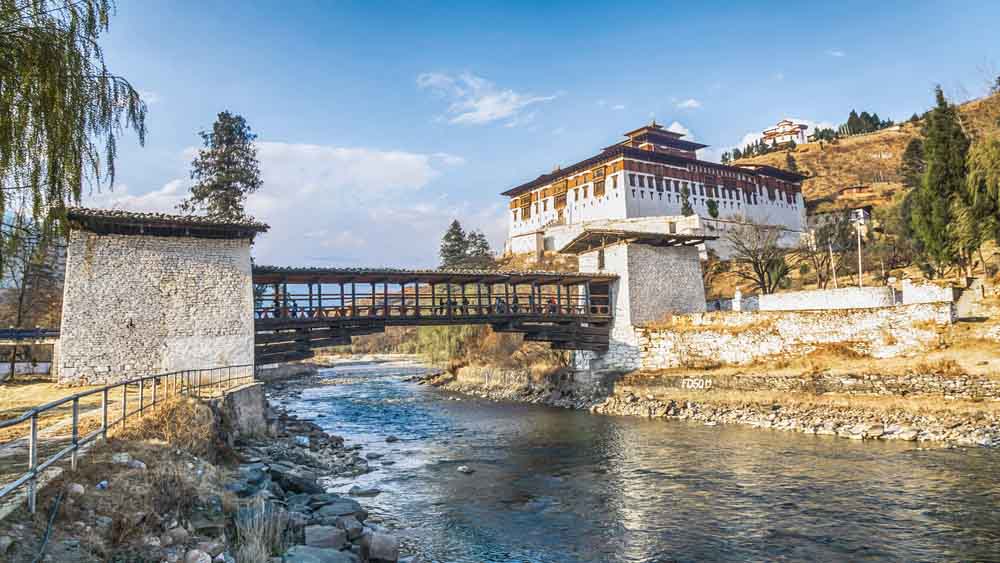
Rinpung Dzong, located in the heart of Paro, is not just an architectural marvel but also a colorful element of Bhutan’s rich fabric. As you travel through its intricate labyrinths, you’ll quickly understand why it’s regarded as one of the must-visit tourist attractions in Bhutan. This dzong is a tribute to Bhutan’s eternal spirit and cultural prowess, with a past that whispers tales of legends and a backdrop of breathtaking mountains. Rinpung Dzong offers a timeless adventure worth witnessing, whether you’re a history buff or a seeker of calm.
Things to Do:
- Explore traditional Bhutanese architecture.
- Attend the annual Paro Tshechu festival.
- Immerse yourself in the tranquil ambiance during evening prayers.
- Discover the fascinating murals and artifacts inside the Dzong.
Best Time to Reach (Timing):
- March to May (spring) for vibrant landscapes.
- September to November (autumn) for clear skies and festivals
Tourist Attractions:
- The central tower (Utse) with its impressive woodwork
- The monk’s assembly halls.
- Beautiful courtyards and serene gardens.
Nearest Airport:
- Paro International Airport (just a few kilometers away).
Nearest Railway Stations:
- Bhutan does not have railways. The closest major railway is in Siliguri, India.
Location:
- Located in the Paro Valley, Rinpung Dzong stands proudly as one of the essential Bhutan tourist attractions, drawing visitors from across the globe to delve into its captivating history.
Take a step back in time and let Rinpung Dzong’s walls narrate tales of a bygone era. Whether you’re weaving through its corridors or simply admiring its grandeur from afar, the experience is undeniably enchanting.
14. Mongar and Lhuntse: Unveiling Eastern Bhutan

Mongar and Lhuntse are hidden beauties in eastern Bhutan, just waiting to be discovered. While Mongar is noted for its modernity mixed with tradition, Lhuntse is the royal family’s ancestral residence. While walking through these settlements, one cannot help but notice the gorgeous landscapes and historic monasteries, which make them notable Bhutan tourist attractions. Whether you’re sampling local foods or attending traditional festivities, their allure will captivate you. Discover Bhutan’s appeal in these unspoiled paradises.
Things to Do:
- Explore the majestic Lhuntse Dzong.
- Attend the vibrant Mongar Tshechu festival.
- Engage in local handicraft shopping, especially the renowned Khoma textiles.
Best Time to Reach (Timing):
- October to March for pleasant weather and clear views.
Tourist Attractions:
- Lhuntse Dzong: An architectural marvel and an important administrative center.
- Mongar Dzong: Reflecting Bhutan’s rich history amidst serene landscapes.
- The annual Mongar Tshechu festival with traditional dances and performances is one of the most popular Bhutan tourist attractions.
Nearest Airport:
- Yongphulla Airport, Trashigang (limited flights; confirm before planning).
Nearest Railway Stations:
- Bhutan doesn’t have railways. The nearest major railway station is in India: New Jalpaiguri (NJP) station.
Location:
- Situated in Eastern Bhutan, Mongar lies south of Lhuntse, connected by the Eastern Bhutan highway.
Discover the essence of Bhutan’s heritage in the tranquil settings of Mongar and Lhuntse.
15. Samdrup Jongkhar: An Insight into the Eastern Bhutanese Experience

Samdrup Jongkhar, located in southern Bhutan, serves as a gateway to the magical Himalayan monarchy. It offers a unique blend of culture and environment, with vibrant markets and verdant scenery. As one of the best Bhutan tourist attractions, its allure stems not just from its scenic beauty but also from the kindness of its people.
Samdrup Jongkhar encourages visitors to immerse themselves in an authentic Bhutanese experience, from age-old monasteries to busy bazaars. Whether you’re looking for spiritual tranquility or a taste of tradition, this town is a treasure trove just waiting to be discovered. Dive into its enchantment and experience a side of Bhutan that enchants and captivates.
Things to Do:
- Dive into the local bazaars, bustling with unique crafts and traditional wares.
- Meditate in serene monasteries, absorbing the spiritual ambiance.
- Sample the region’s delectable cuisine, from momos to ema datshi.
Best Time to Reach (Timing):
- October to February, when the weather is cool and the skies are clear.
Tourist Attractions:
- The ancient Samdrup Jongkhar Dzong is a testament to Bhutanese architecture.
- Dewathang is rich in history from the British-Bhutanese war.
- As one of the Bhutan tourist attractions, the vibrant Mela Bazaar is a must-visit.
Nearest Airport:
- Guwahati International Airport in Assam, India, is located approximately 110 km away.
Nearest Railway Stations:
- New Bongaigaon Railway Station in Assam, India.
Location:
- Located in the southeastern tip of Bhutan, Samdrup Jongkhar shares a border with the Indian state of Assam.
Discover the eastern charm of Bhutan in Samdrup Jongkhar, where tradition meets tranquility.
16. Sakteng Wildlife Sanctuary

Sakteng Wildlife Sanctuary, located in eastern Bhutan, stands out among the Best Bhutan tourist attractions. This natural sanctuary encompasses approximately 650 square kilometers and protects a variety of ecosystems, including warm broadleaf forests and alpine meadows. Visitors are drawn to the sanctuary because it is thought to be the abode of the mythological ‘Yeti’ or ‘Migoi’.
You’ll come across rare flora and fauna as you walk its trails, capturing Bhutan’s vast biodiversity. Sakteng provides an experience unlike any other for people seeking both action and serenity. Dive into this pristine sanctuary to discover Bhutan’s true natural wonder.
Things to Do:
- Engage in bird-watching, spotting species unique to Eastern Bhutan.
- Trek through diverse terrains, from alpine meadows to dense forests.
- Immerse yourself in local folklore, especially tales of the mythical ‘Yeti’ or ‘Migoi’.
- Participate in community-based eco-tourism projects.
Best Time to Reach (Timing):
- Ideal months are from March to May and September to November.
Tourist Attractions:
- The sanctuary itself, with its diverse habitats.
- Traditional Bhutanese villages are on the sanctuary’s fringes.
- Unique species of flora and fauna, make it a prime location among Bhutan tourist attractions.
Nearest Airport:
- Yongphulla Airport in Trashigang.
Nearest Railway Stations:
- Bhutan doesn’t have railways. The nearest railway station is in India: New Jalpaiguri Railway Station.
Location:
- Located in the easternmost part of Bhutan, bordering the Indian state of Arunachal Pradesh.
17. Tashigang: A Jewel of East Bhutan
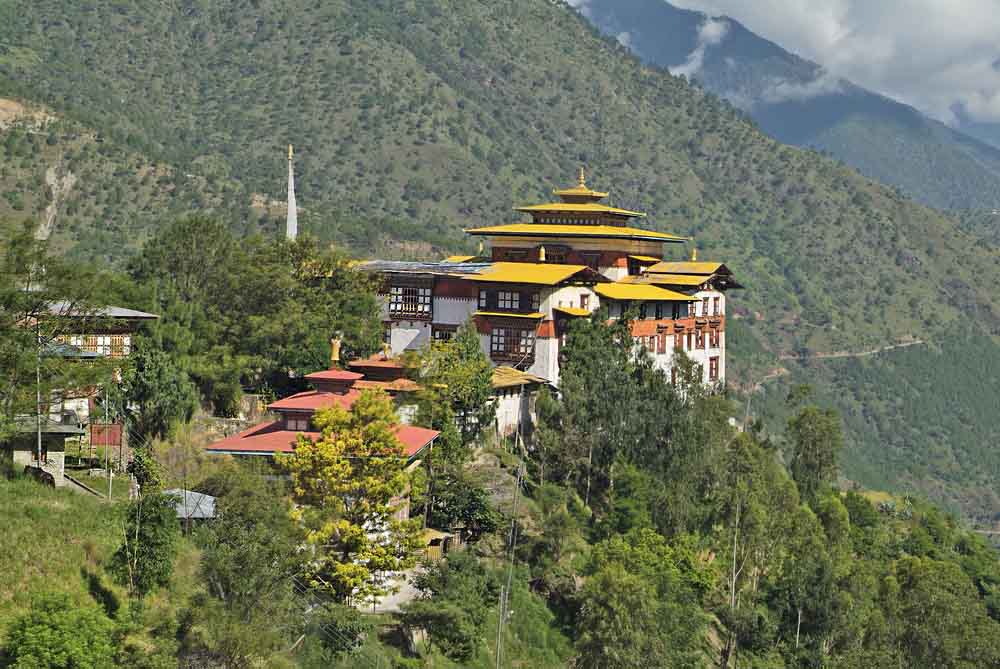
Tashigang, located on Bhutan’s eastern border, is more than simply a town—it’s a melting pot of history, culture, and unspoiled nature. It is known as the ‘Jewel of the East,’ and it entices visitors with its magnificent landscapes and exciting festivities. Tashigang, one of the top Bhutan tourist attractions, provides visitors with a one-of-a-kind experience, from touring the centuries-old Tashigang Dzong to mixing with the friendly inhabitants.
Tashigang’s appeal unfolds as you explore its small alleyways, offering a bit of Bhutan that is really unique. Tashigang guarantees a journey worth remembering, whether you’re a history buff or a nature lover.
Things to Do:
- Explore the historic Tashigang Dzong.
- Attend the vibrant Tashigang Tshechu festival.
- Shop for traditional Bhutanese crafts at local markets.
- Delve into local lore with community-guided village walks.
Best Time to Reach (Timing):
- Clear skies and pleasant weather from October through December.
Tourist Attractions:
- Among the top Bhutan tourist attractions, Tashigang Dzong is a must-visit for its architectural beauty and cultural significance.
- Radi Village: Experience the authentic Bhutanese rural lifestyle.
- Gom Kora temple, an ancient spiritual hub.
Nearest Airport:
- Yongphulla Airport, located in Trashigang District.
Nearest Railway Stations:
- Bhutan does not have railways; the closest major railway station is in India, New Jalpaiguri Railway Station.
Location:
- Situated in eastern Bhutan, Tashigang serves as the administrative center of the Trashigang Dzongkhag (district).
With its blend of natural beauty and rich history, Tashigang is indeed a highlight among the best Bhutan tourist attractions. Whether you’re seeking adventure or solace, this eastern gem has something for every traveler.
18. Tashiyangtse, Bhutan

Tashiyangtse is a peaceful jewel in Bhutan’s eastern quarter, sometimes overshadowed by its bustling neighbors. Nonetheless, it has a distinct charm that true adventurers adore. Tashiyangtse noted for its wooden crafts and colorful festivals, is one of the lesser-known Bhutan tourist attractions, offering an unspoiled haven for those seeking authenticity. This town is a tapestry of culture, environment, and history, from the sacred Chorten Kora to the calm Kulong Chhu River. Discover Tashiyangtse, and you will discover a piece of Bhutan’s spirit.
Things to Do:
- Explore the intricate wooden crafts at the National Institute for Zorig Chusum.
- Immerse yourself in the vibrant local festivals unique to Tashiyangtse’s traditions.
- Engage in serene riverside walks along the Kulong Chhu River.
Best Time to Reach (Timing):
- October to December for the bright sky and pleasant weather.
Tourist Attractions:
- Chorten Kora, a stunning stupa, draws devotees and travelers alike.
- The picturesque Bumdeling Wildlife Sanctuary is one of the prime Bhutan tourist attractions.
Nearest Airport:
- Yongphulla Airport in Trashigang is approximately a 2-hour drive away.
Nearest Railway Stations:
- Bhutan doesn’t have railways; the closest major railway is in New Jalpaiguri, India.
Location:
- Located in eastern Bhutan, Tashiyangtse shares its borders with Arunachal Pradesh, India.
Embark on a journey to Tashiyangtse, and you’ll encounter a blend of tradition, culture, and natural beauty that is quintessential Bhutan.
19. Royal Manas National Park

Royal Manas National Park, located in the Himalayan foothills, is an unrivaled jewel among Bhutan tourist attractions. This UNESCO World Heritage site provides a biodiverse habitat for exotic wildlife such as tigers, elephants, and the uncommon golden langur. The park is a cultural convergence as well as a tribute to nature’s richness, with local people playing an important role in its conservation.
Visit Manas for a wild hideaway that merges nature and heritage, making it an unforgettable stop on your Bhutanese tour. Conversations with nature here are more than just an experience; they are soulful exchanges.
Things to Do:
- Set out on an exciting jungle safari to see a variety of creatures.
- Experience river rafting on the Manas River.
- Interact with the local communities and understand their conservation efforts.
Best Time to Reach (Timing):
- Ideal months: November to April. The park remains closed during monsoons (June to September) due to flooding.
Tourist Attractions:
- Spot rare species such as the golden langur, pygmy hog, and wild buffaloes.
- Admire the scenic beauty of the Manas River and its surrounding lush greenery, making it a top pick among Bhutan tourist attractions.
- Explore the diverse flora, which is a treat for botany enthusiasts.
Nearest Airport:
- Guwahati, Assam (India), Lokpriya Gopinath Bordoloi International Airport
Nearest Railway Stations:
- Barpeta Road and Rangia, both in Assam (India)
Location:
- Located on the Bhutan-India border, in the southern foothills of the Bhutanese Himalayas.
This serene and biodiverse park is a must-visit for nature lovers and those wanting an authentic Bhutanese experience.
20. Phuentsholing: A Glimpse
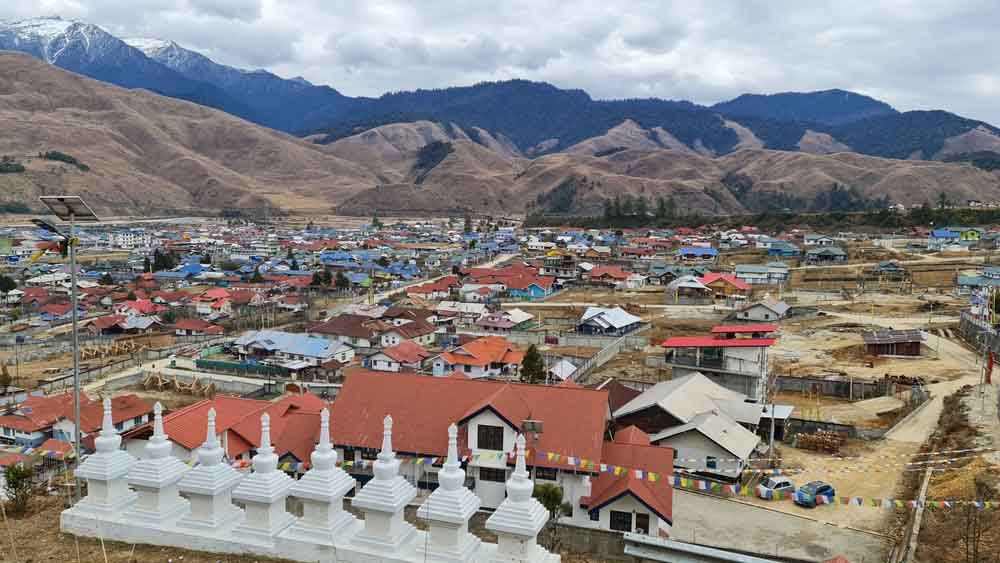
Phuentsholing, located on the Bhutan-India border, acts as the entryway to the magical country. The town, with its beautiful blend of cultures and traditions, stands in stark contrast to neighboring India. While exploring, you’ll come across the majestic Karbandi Monastery and lively local marketplaces, making it one of the most prominent Bhutan tourist attractions.
Its lively streets and friendly residents set the tone for the thrills that await further inside Bhutan. Whether you’re starting your Bhutanese adventure or just passing through, Phuentsholing offers a genuine experience of this Himalayan kingdom.
Things to Do:
- Explore the bustling local markets for authentic Bhutanese crafts.
- Visit the serene Karbandi Monastery for panoramic views.
- Stroll through the Amo Chhu Crocodile Breeding Centre.
Best Time to Reach (Timing):
- The ideal months are October to December for clear skies. March to May also offers pleasant weather and vibrant festivities.
Tourist Attractions:
- Karbandi Monastery: A tranquil space with sweeping views.
- Zangto Pelri Lhakhang: A spiritual haven in the heart of the city.
- Among the key Bhutan tourist attractions, the Bhutan Gate stands iconic at the border, signifying unity.
Nearest Airport:
- Bagdogra Airport, India (about 170 km away).
Nearest Railway Stations:
- Hasimara and New Alipurduar in India.
Location:
- Phuentsholing is strategically located on the southern border of Bhutan, adjacent to the Indian town of Jaigaon.
With its unique blend of modernity and tradition, Phuentsholing offers a perfect introduction to the rich tapestry of Bhutanese culture and heritage.
21. Gasa: A Hidden Gem Among Bhutan Tourist Attractions
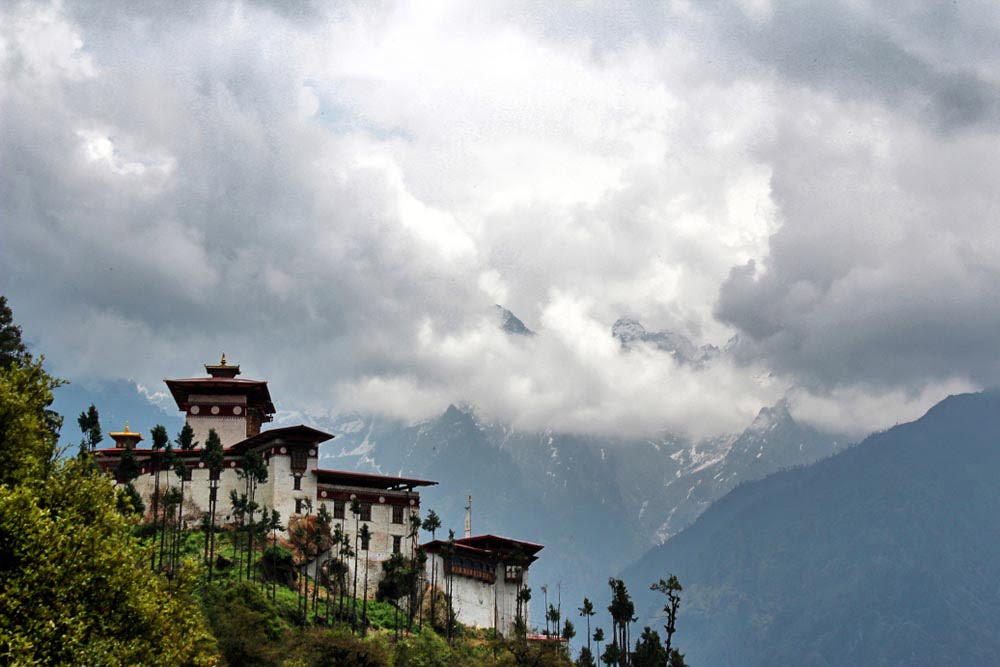
Gasa, located in Bhutan’s mountains, is an unspoiled jewel. With its gorgeous surroundings and hot springs, it is quickly becoming one of Bhutan’s must-see tourist attractions. Aside from its natural beauty, Gasa has a rich tapestry of culture, as evidenced by its imposing Dzong and vibrant festivals. Gasa promises not just stunning vistas but also a deep dive into Bhutan’s spirit as you travel along its picturesque pathways. Gasa welcomes you with open arms if you’re looking for a mix of adventure and culture. A trip here is more than just sightseeing; it’s an experience of a lifetime.
Things to Do:
- Immerse yourself in the rejuvenating Gasa hot springs.
- Explore the historic Gasa Dzong.
- Trek the scenic high-altitude trails.
- Attend local festivals and see traditional dances.
Best Time to Reach (Timing):
- Spring is from March to May, and autumn is from September to November.
Tourist Attractions:
- Gasa Hot Springs – a natural wonder.
- The grandeur of Gasa Dzong
- Picturesque trekking routes like the Snowman Trek.
Nearest Airport:
- Paro International Airport, though it’s a lengthy drive or trek to Gasa.
Nearest Railway Stations:
- Bhutan doesn’t have railways. The nearest is in India, Hasimara station.
Location:
- Located in the northwestern region of Bhutan, Gasa is set against the backdrop of the Eastern Himalayas.
Discover Gasa: a convergence of nature, history, and Bhutanese culture. An unforgettable destination that lures travelers seeking authentic experiences beyond the usual.
22. Chomolhari, Bhutan

Chomolhari, also known as the “Bride of Kangchenjunga,” is a magnificent tribute to Bhutan’s natural splendor. With a height of almost 7,300 meters, its snow-capped top provides trekkers with an exhilarating challenge while also providing beautiful views. Chomolhari, located near the Tibet-Bhutan border, is not only a trekker’s dream; it is also an important part of Bhutan’s tourist attractions.
Locals regard it as the home of a guardian deity, fusing nature with spiritualism. Chomolhari’s magnetism is difficult to resist when in Bhutan. Its splendor captivates every spirit, whether you’re an adventurer or a seeker.
Things to Do:
- Embark on the Chomolhari trek to experience the majestic views of the mountain.
- Visit nearby monasteries and immerse yourself in the spiritual ambiance.
- Capture breathtaking sunrise and sunset moments for your photography collection.
- Engage with locals to learn about the region’s rich folklore and traditions.
Best Time to Reach (Timing):
- Late April to early June and late September to early November for optimal trekking conditions.
Tourist Attractions:
- Chomolhari Base Camp is a popular starting point for trekkers.
- Nearby serene lakes and local yak herder settlements enhance Bhutan’s tourist attractions.
Nearest Airport:
- Paro International Airport.
Nearest Railway Stations:
- Bhutan doesn’t have a railway system; the nearest station is in India, New Jalpaiguri (NJP) station.
Location:
- Situated at the Bhutan-Tibet border, Chomolhari is one of Bhutan’s most iconic peaks, attracting adventurers from around the world.
Enjoy your trip and be captivated by the natural beauty and cultural richness of the region!
23. Punakha Suspension Bridge

The Punakha Suspension Bridge, which spans the magnificent Pho Chhu river, is one of Bhutan’s longest of its kind. It offers amazing views of the Punakha Valley and is covered in legends and colorful prayer flags. The gentle swing and magnificent panoramas as one walks across make it one of the must-see Bhutan tourism attractions.
This bridge is more than simply a walkway; it conveys stories of local legend and provides a glimpse of Bhutan’s breathtaking natural splendor. So, don’t simply admire Punakha from afar; travel its length and enjoy the synergy between culture and nature.
Things to Do:
- Walk across the longest suspension bridge in Bhutan, taking in the panoramic views of the Punakha Valley.
- Experience tranquility by sitting near the bridge and listening to the flow of the Pho Chhu River below.
- Visit nearby Punakha Dzong, a significant part of Bhutan tourist attractions, to soak in the rich Bhutanese culture.
- Engage in bird watching and spot some local species.
Best Time to Reach (Timing):
- October to December offer clear skies and stunning views, while March to May showcase vibrant spring colors.
Tourist Attractions:
- Close proximity to Punakha Dzong and Chimi Lhakhang.
- Riverside picnics and nature walks around the area.
Nearest Airport:
- Paro International Airport.
Nearest Railway Stations:
- Bhutan doesn’t have railways. The closest railway station is in India, New Jalpaiguri (NJP) station.
Location:
- Located in Punakha, Bhutan, the suspension bridge connects the town with Punakha Dzong, offering a scenic route across the Pho Chhu River.
Come and experience the blend of nature and tradition at Punakha Suspension Bridge!
24. Kurjey Lhakhang: A Gem Among Bhutan Tourist Attractions
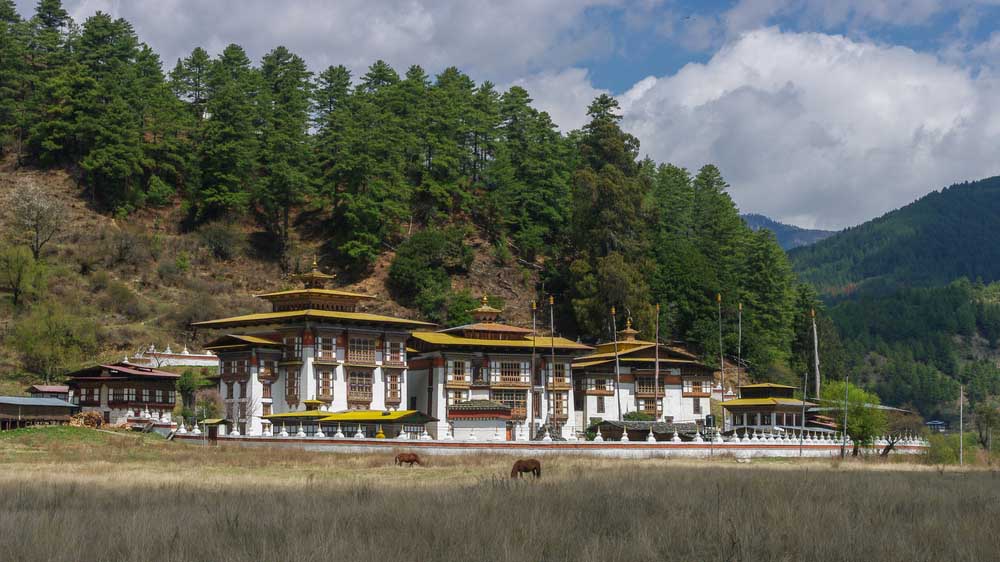
Kurjey Lhakhang stands tall among Bhutan tourist attractions, nestled in the tranquil Bumthang valley. The imprint of Guru Rinpoche’s body is claimed to be housed in this temple complex, which has a long history. Many people come here to pray, and the peace is obvious. Its environment transports visitors to a time of legends and spiritual aura, surrounded by towering trees and running streams. A visit to Kurjey Lhakhang in Bhutan is a voyage into the heart of the country. Don’t pass up this opportunity to learn about Bhutanese culture!
Things to Do:
- Engage in peaceful meditation amidst the temple’s serene environment.
- Explore the rich murals and artwork that adorn the temple walls.
- Join the local pilgrims in their spiritual rituals to get a feel for Bhutan’s deep-rooted culture.
Best Time to Reach (Timing):
- Visit during the months of October to April for a pleasant climate and clear views.
- Temple timings: 9 AM – 5 PM daily.
Tourist Attractions:
- The majestic main temple houses the revered body imprint of Guru Rinpoche.
- Nearby stupas and smaller temples have their own historical significance.
Nearest Airport:
- Bathpalathang Airport in Bumthang is roughly 15 minutes by car.
Nearest Railway Stations:
- Bhutan doesn’t have a railway system, but road connectivity is efficient.
Location:
- Situated in the Bumthang Valley, northern Bhutan A well-signposted destination, it’s easily accessible from the town’s main road.
With its spiritual ambiance and rich history, Kurjey Lhakhang is a testament to Bhutan’s religious heritage. When charting your journey through Bhutan tourist attractions, make sure this sacred site is on your list!
25. National Museum of Bhutan

The National Museum of Bhutan, located in Paro, is a tribute to the country’s rich legacy. You’re going deep into the heart of the best Bhutan tourist attractions as you explore its many exhibitions. From ancient artifacts to contemporary art, each piece tells a narrative and captures the essence of Bhutan.
The museum, housed in a 17th-century watchtower, provides panoramic views of Paro Valley while merging history and nature. A visit here isn’t only about the history; it’s an immersive trip into the heart of Bhutan. So, if you’re planning a trip to Bhutan, this museum is a must-see!
Things to Do:
- Explore the mesmerizing collection of Bhutanese art, both ancient and contemporary.
- Dive into the history of Bhutan through its artifacts and manuscripts.
- Capture stunning photographs from the museum’s vantage point overlooking the Paro Valley.
- Attend local exhibitions and workshops, often hosted to promote Bhutan’s culture and traditions.
Best Time to Reach (Timing):
- Open from 9:00 AM to 5:00 PM during summer and 9:00 AM to 4:00 PM in winter.
Tourist Attractions:
- Located in the middle of Bhutan’s tourist attractions Paro, it offers a perfect blend of history and scenic beauty.
- The 17th-century watchtower architecture itself is a sight to behold.
- Panoramic views of the surrounding Paro Valley
Nearest airport:
- Paro International Airport.
Nearest railway stations:
- Bhutan does not have a railway system. The closest major railway station is in Siliguri, India.
Location:
- Situated in Paro, atop a hill overlooking Paro Dzong and Paro Valley
Visiting the National Museum is an enriching experience, providing a vivid glimpse into the heart of Bhutan’s legacy and culture. It’s a true embodiment of what makes Bhutan unique!
26. Khamsum Yulley Namgyal Chorten
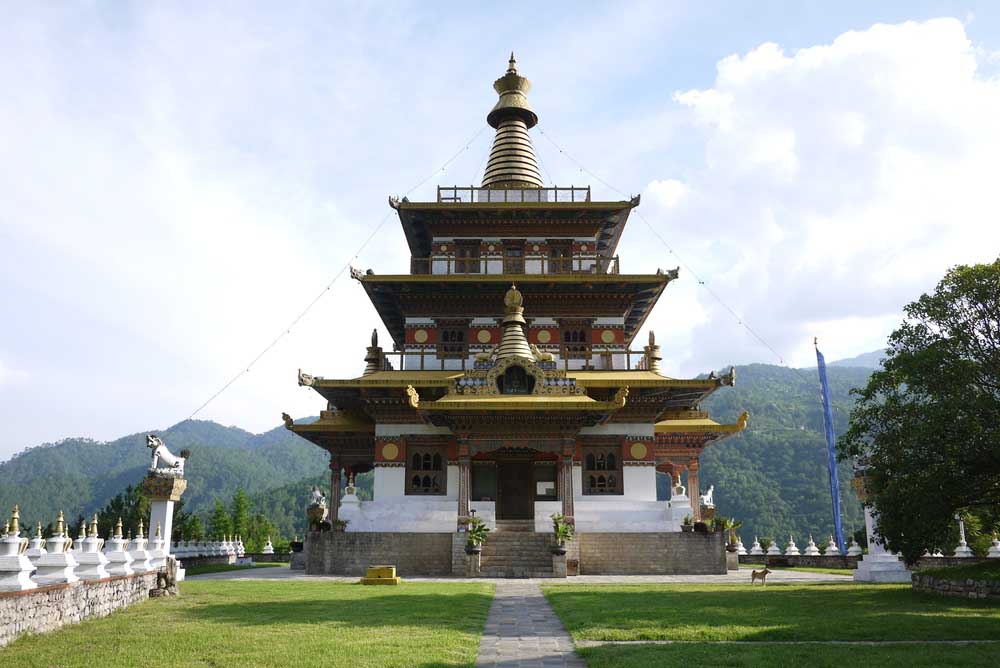
The Khamsum Yulley Namgyal Chorten, located in the tranquil Punakha valley, is a monument to Bhutan’s architectural prowess. As one of the best travels across Bhutan tourist attractions, this chorten stands out as a one-of-a-kind treasure. It was constructed over nine years and exudes a sense of quiet and spiritual tranquility. Visitors who walk up are rewarded with spectacular panoramic vistas, making it both a spiritual and visual retreat. If you want to experience a mix of culture and nature in Bhutan, this chorten is a must-see.
Things to Do:
- Immerse in serene meditation sessions.
- Experience the architectural marvel with guided tours.
- Hike up to the chorten for panoramic valley views.
- Capture stunning photographs of traditional Bhutanese artwork.
Best Time to Reach (Timing):
- Open from 6:00 AM to 6:00 PM.
- Best visited during the months of March to May and September to November.
Tourist Attractions:
- Amidst the myriad of Bhutan tourist attractions, this chorten stands out for its spiritual significance and grandeur. The intricate carvings and paintings inside are a visual treat.
Nearest Airport:
- Paro International Airport.
Nearest Railway Stations:
- Bhutan does not have railway connectivity. The closest major railway station is in Siliguri, India.
Location:
- Located in Punakha Valley, it’s a pleasant hike away from the main road, offering visitors a chance to bask in the region’s natural beauty.
With its rich cultural heritage and pristine environment, Khamsum Yulley Namgyal Chorten holds a special place among the renowned Bhutan tourist attractions. Whether it’s for spiritual rejuvenation or just to appreciate the majestic Bhutanese architecture, this chorten is sure to leave an indelible impression on your heart.
Adventure Activities in Bhutan: Unveiling Thrills Amidst Serenity
When most people think about Bhutan, pictures of quiet monasteries, panoramic mountain views, and a calm, serene setting spring to mind. However, this mysterious area isn’t all about peace and quiet. Bhutan has a surprising range of adventure activities for anyone looking for an adrenaline rush. Let’s have a look at some of the exciting activities that highlight Bhutan’s tourist attractions in a unique way:
1. Trekking Amidst the Himalayas
Trekking Bhutan, with its magnificent scenery amidst the Himalayas, provides a range of hiking routes. There’s a trail for every explorer out there, from the difficult Snowman Trek via many passes to the relatively easy Gangtey Trek.
2. Competitions in Archery
Archery is more than just Bhutan’s national sport; it’s a passionate celebration. Joining or even observing a local archery competition in Bhutan can be a thrilling experience.
3. Mountain Biking in Valleys
Bhutan’s rough terrain is ideal for mountain biking aficionados. Ride through traditional villages and past monasteries, and take in the breathtaking Himalayan views.
4. White-Water Rafting in Mo Chhu and Paro Chhu
Bhutan’s rivers provide excellent white-water rafting opportunities. Enjoy the exhilarating rapids while also taking in the tranquil surroundings of the rivers.
5. Rock Climbing Near Thimphu
For rock climbers, the natural cliffs around Thimphu are a perfect place to put your skills to the test while taking in the grandeur of Bhutan’s terrain.
6. Bird Watching in the Dense Forests
While not an adrenaline rush, bird watching in Bhutan’s deep forests may be a fascinating journey for nature lovers, thanks to the varied range of rare birds that call this location home.
7. Under the Stars Camping
Bhutan’s bright skies make for an ideal camping night. The experience is nothing short of wonderful, whether you’re on a trip or simply camping in one of the numerous tranquil areas.
While Bhutan’s calm and spirituality are its main draws, the country also boasts plenty of adventure for thrill seekers. Bhutan’s tourist attractions have something for everyone, whether you’re an experienced adventurer or just starting out in the realm of outdoor activities. So, gather your belongings and prepare to see Bhutan in a whole new light!
Suggestion to Read: Discover the 10 Best Adventure Activities in Bhutan
Sustainable Tourism in Bhutan
Bhutan, the ‘Last Shangri-La’, is a beacon of sustainable tourism. Here’s a brief look into how the country preserves its Bhutan tourist attractions while championing responsible travel:
- High value, low impact: Tourism in Bhutan focuses on quality experiences, with a daily fee contributing to conservation efforts.
- Gross National Happiness: Prioritizing holistic growth, Bhutan measures success through well-being, not just GDP.
- Eco-Conservation: Tourist fees fund conservation, ensuring attractions remain pristine for future visitors.
- Supporting local art: Tourists are encouraged to buy authentic Bhutanese products, benefiting local artisans.
- Eco-friendly Stays: Accommodations in Bhutan often have a sustainable edge, from eco-lodges to farm stays.
- Cultural Preservation: Regulated access to sacred sites ensures they retain their sanctity and authenticity.
- Educational Tours: Guided tours don’t just showcase sights; they educate visitors about Bhutan’s conservation ethos.
- Community Engagement: Tourism initiatives engage local communities, offering immersive experiences like village homestays.
- Waste Management: Bhutan focuses on innovative solutions to handle tourist-generated waste responsibly.
- Mindful Trekking: Adventure tourism emphasizes leaving no trace behind and preserving Bhutan’s trails for posterity.
In essence, visiting Bhutan isn’t just about sightseeing; it’s a commitment to traveling consciously and respecting the nation’s sustainable vision.
Planning Your Visit: A Step-by-Step Guide to Bhutan
Do you fantasize about the gorgeous Himalayas, tranquil monasteries, and rich tapestry of Bhutanese culture? You’re not by yourself. However, before you immerse yourself in Bhutan’s tourist attractions, you must carefully plan your trip. Let’s get started with a detailed guide that will ensure your Bhutanese adventure is nothing short of spectacular.
1. Choose the right season:
Bhutan, with its diverse climate zones, provides a variety of experiences throughout the year. Do you wish to witness the vibrant festivals, or are you aiming for a tranquil exploration of Bhutan’s tourist attractions? This decision will assist you in determining the optimum season for your visit.
2. Secure Your Visa:
Bhutan’s unique visa restrictions contribute to its exclusivity. Unlike other places, you cannot simply land and explore. Make sure you apply for your visa well in advance. Individual travel without a tour operator is usually not permitted.
3. Map Out Your Interests:
Bhutan offers a variety of experiences, from trekking the Tiger’s Nest to interacting with villagers in Punakha. Prioritize what speaks to you. This not only makes your trip more meaningful but also ensures you don’t miss out on any of Bhutan’s must-see tourist destinations.
4. Understand Budgeting:
Bhutan’s special tourist approach involves a daily fee. While it may appear to be expensive at first, it usually includes lodging, dinner, and even a tour. Still, it’s a good idea to set aside some money for those one-of-a-kind handicrafts or unplanned vacations.
5. Packing Essentials:
Bhutan has a varied topography, so pack accordingly. Layering is your best friend, especially if you intend to go to higher elevations. And how about a brief tip? Carry a scarf or cap with you when visiting religious sites.
6. Dive into Local Etiquette:
The kindness of its people is one of the pleasures of visiting Bhutan. A little awareness of local customs, from simple greetings to decorum in religious settings, will enrich your encounters.
7. Stay Connected, But Not Too Much:
Bhutan is a retreat, yet if you want to share or keep connected, most towns have adequate internet access. Remember that sometimes the best moments happen when you’re off the grid, taking in the beauty of Bhutan’s tourist attractions without being distracted by technology.
Conclusion
Bhutan, sometimes known as the ‘Last Shangri-La,’ provides more than just stunning panoramas. Its allure stems from the delicate balance it strikes between accessibility and preservation. Bhutan, unlike many other worldwide destinations, protects its legacy and ecology, ensuring that Bhutan tourist attractions stay authentic and pure.
This conscious approach to tourism, which prioritizes sustainability above unrestrained growth, promises guests an enriching and transforming experience. So, when you visit Bhutan, you are immersing yourself in a deeply conserved culture and landscape. It’s an untouched journey that makes every time in Bhutan absolutely magical.
FAQ’s
Q1. What’s the best time to visit Bhutan?
- The ideal time to visit Bhutan is during spring (March to May) and fall (September to November), when the weather is pleasant and festivals are in full swing.
Q2. Do I need special permits to visit the protected areas?
- Yes, permits are required. Your tour operator can usually assist with this.
Q3. What currency is used in Bhutan?
- Bhutanese Ngultrum (BTN) is the official currency, but Indian Rupees (INR) are also widely accepted.
Q4. Do I need a visa to visit Bhutan?
- Yes, all tourists (except Indian, Bangladeshi, and Maldivian nationals) need a visa.
Q5. Do they speak English in Bhutan?
- Yes, English is widely spoken, especially by the younger generation and those in the tourism industry.
